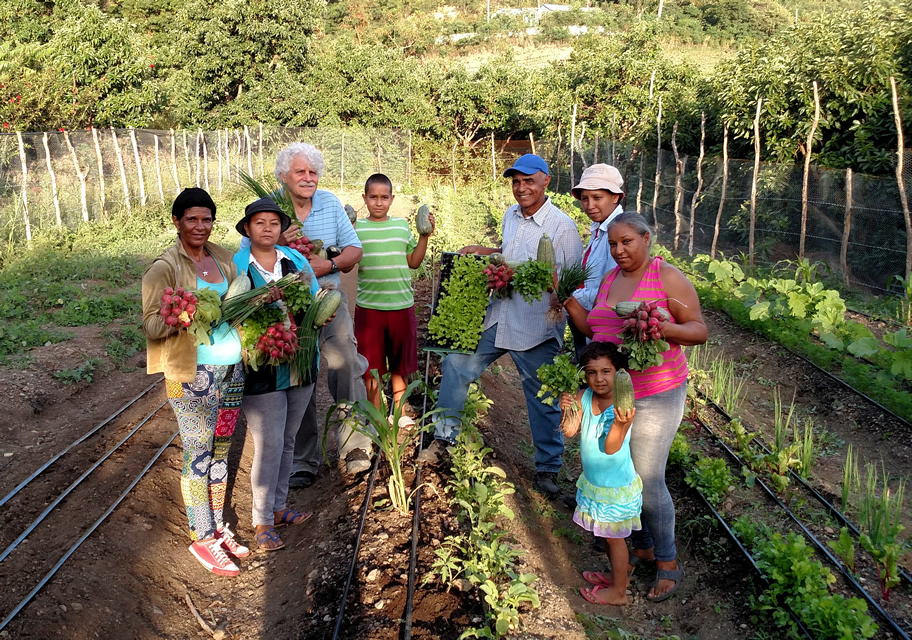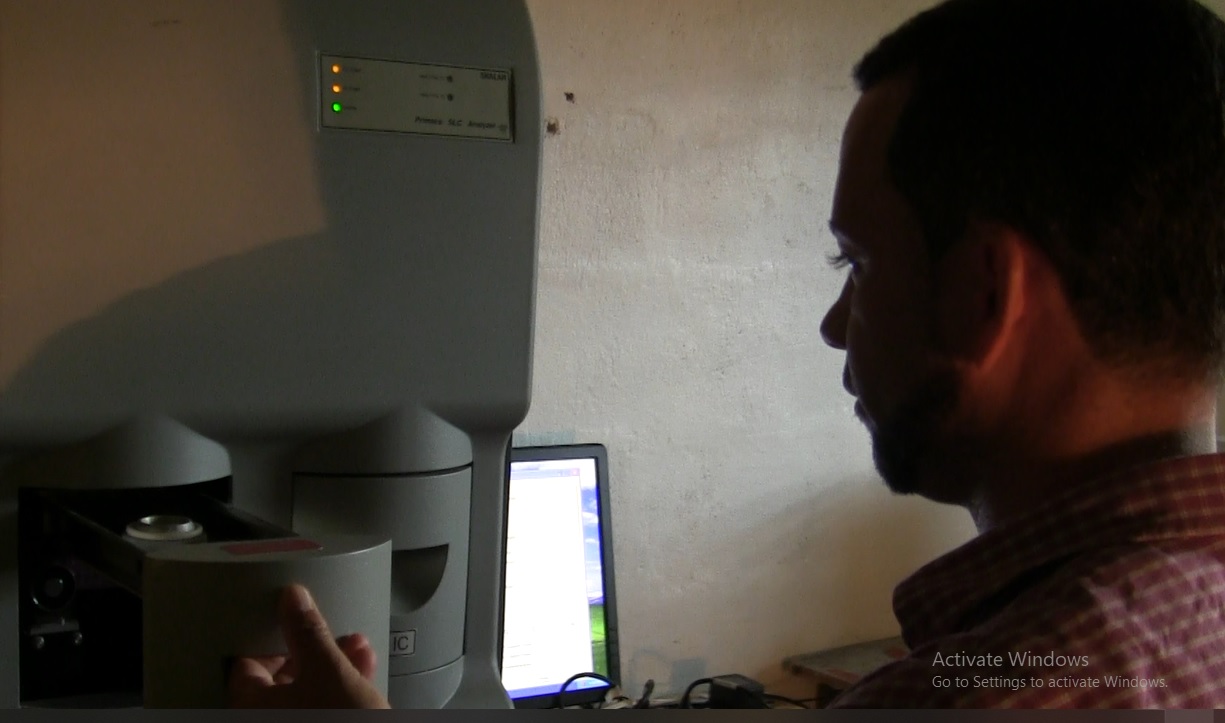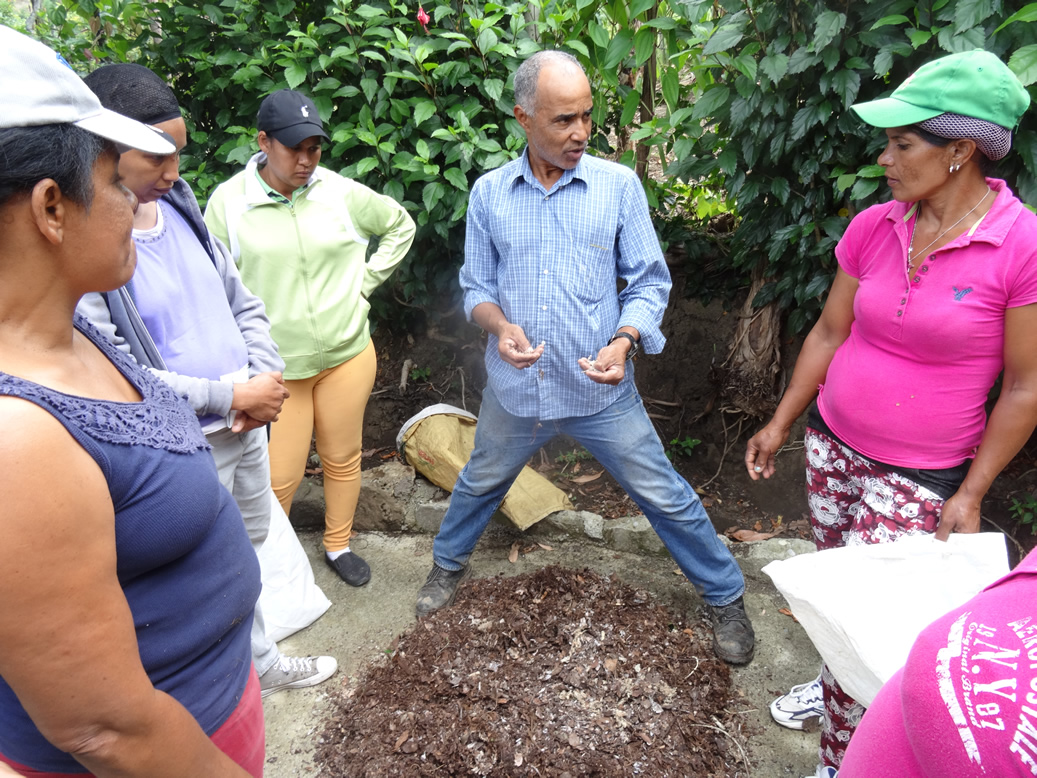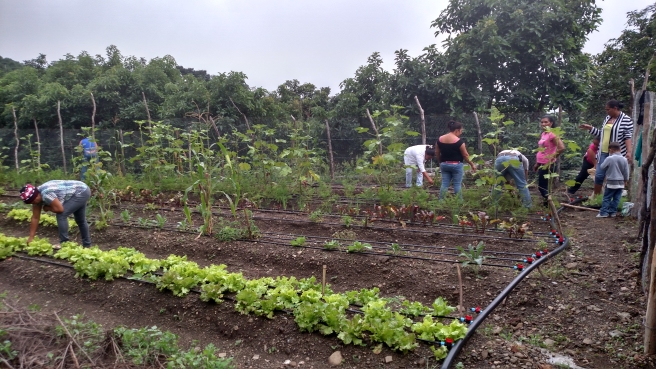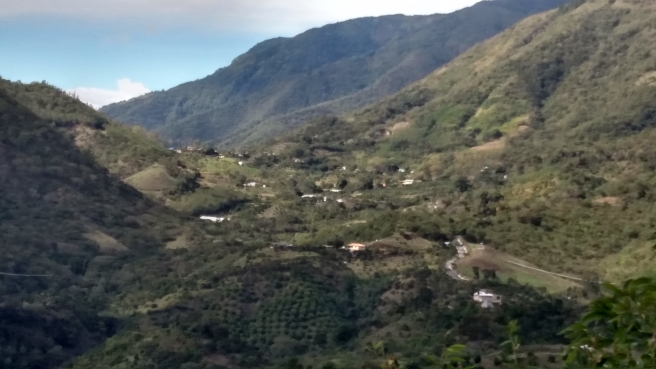Organic Teaching Garden in Los Martinez |
The Ocoa Climate Farmersmaking the connection between organic agriculture and climate activism, and promoting both |
Rural farming communities in the Dominican Republic are well aware of the health and economic failures of "Green Revolution" industrial-style agriculture. They are also very conscious of the increasingly perceptible impacts of climate change. The Ocoa Climate Farmers project focuses on the intersection of rural sustainability and climate activism, through encouraging the transition to regenerative organic agriculture.
In this innovative project that exemplifies “think globally, act locally”, the Rural Alternatives Center of El Limon, Dominican Republic (CAREL) is partnering with the Association for the Development of Los Martinez (ASOPADELOMA) to create a practical model for the transition to regenerative organic agriculture, with the farmers themselves acting as change agents to replicate their project in nearby communities.
The pilot project has world-level political implications, opening an active role for marginalized rural people to personally and consciously challenge climate change. At the same time, it addresses the challenges of economic hardship, health problems, and environmental degradation that forty years of chemical agriculture have brought to the mountains of the Dominican Republic.
The underlying science of carbon sequestration is sound. While the amount of carbon dioxide to be removed from the atmosphere per hectare is relatively modest, the Rodale Institute, among others, calculate that the planet's one billion small and peasant farmers could make a major contribution to reducing global warming, and even eventually rolling back atmospheric carbon dioxide to pre-industrial levels.
To maintain a focus on the carbon sequestration aspect of the project, for the farmers and for the world, CAREL will provide a rigorous, participatory science-based measurement of the soil's increasing carbon content as the project proceeds. To do this, we have built... in the mountain village of Los Martinez... the island's first laboratory with the capacity to measure the Total Organic Carbon in the participating farmers' soil.
The project will require a major shift in the farmers’ agricultural paradigm, which is being supported by model demonstration community gardens and by the participation of local and national experts in integrated sustainable agriculture. We are also working to develop active local, regional, and national markets for organic produce, particularly through "farm to table" models.
CAREL has the credibility, experience, and access to resources to make this project succeed, with its village-based training center and a 20-year track record that has resulted in some 45 community-based micro-hydroelectric systems serving over 15,000 residents. But as a grassroots, village-based nonprofit we rely on modest donations to get our projects moving.
Photos and Videos from the Dominican Republic
|
Hot News!(literally... the analyzer oven operates at 1050 degrees C!) |
|
Los Martinez resident Maiker Guerrero Operating the Analyzer |
|
click here to watch the first soil carbon analysis in Los Martinez September 1, 2018 |
|
DONATE by PayPal through our U.S. fiscal sponsor, All donations through PayPal are tax-deductible |
||
Maximize your tax-deductible contribution (over $ 100) by mailing a check directly to our fiscal sponsor |

